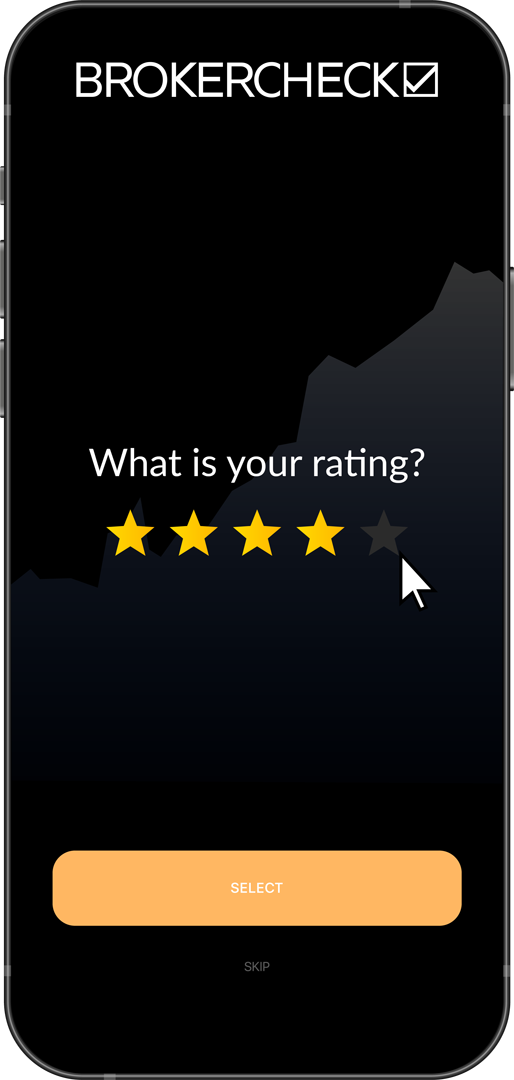1. Overview of the Open Interest Indicator
The Open Interest (OI) indicator is a fundamental tool used in the financial markets, particularly valuable in the derivatives market. It represents the total number of outstanding contracts that have not been settled for an asset. Unlike trading volume, which accounts for the total number of shares or contracts traded in a day, Open Interest provides insight into the flow of money into futures and options markets, offering a deeper understanding of market strength and sentiment.
Open Interest increases when new contracts are created by market participants, indicating fresh money entering the market. Conversely, it decreases when contracts are closed or settled. This indicator is especially useful for identifying market trends and potential reversals. A rising OI suggests a strengthening trend, whereas declining OI may indicate a weakening trend or potential reversal.
Traders and investors use Open Interest to gauge market sentiment and to make more informed trading decisions. It is often analyzed in conjunction with other indicators like price movements and trading volume, to gain a comprehensive view of the market dynamics.

| Attribute | Description |
|---|---|
| Type of Indicator | Derivative Market Indicator |
| Primary Use | Gauging market strength and sentiment |
| Calculation Complexity | Low |
| Typical Data Source | Futures and Options Market Data |
| Common Interpretation | Increasing OI indicates strengthening trend; Decreasing OI indicates potential reversal or weakening trend |
2. Calculation Process of Open Interest
Understanding the calculation of Open Interest (OI) is crucial for interpreting its implications accurately. The process, while straightforward, involves several key aspects that traders and analysts must be aware of.
2.1 Basic Calculation of Open Interest
Open Interest is calculated by counting the total number of open contracts in a particular market. An open contract is one that has been traded but not yet liquidated by an offsetting trade or by delivery. The calculation is as follows:
- Count of New Contracts: Each new trade that opens a new position adds to the open interest count.
- Count of Closed Contracts: When a trade is closed, it is subtracted from the open interest.
It’s important to note that OI is a cumulative total. For example, if five new futures contracts are bought and sold in a day, the open interest increases by five, assuming these contracts are new positions and not offsetting existing ones.
2.2 Considerations in Calculation
There are a few critical considerations to keep in mind:
- Time of Day: OI is typically reported at the end of each trading day.
- Expiry and Settlement: As contracts approach their expiry date, open interest can fluctuate significantly due to closing or rolling over of positions.
- Volume vs. Open Interest: While trading volume accounts for total contracts traded in a day, OI is concerned only with open, or unsettled, contracts.
| Aspect | Details |
|---|---|
| What It Counts | Total number of open contracts |
| Increases When | New contracts are opened |
| Decreases When | Contracts are closed or settled |
| Reporting Time | End of trading day |
| Key Considerations | Time of day, expiry and settlement of contracts, distinction from trading volume |
3. Optimal Values for Setup in Different Timeframes
Setting up the Open Interest indicator effectively involves understanding its optimal values in various trading timeframes. Different market environments and trading styles require distinct approaches to interpreting Open Interest data. Here, we explore these nuances across various timeframes.
3.1 Short-Term Trading
In short-term trading or day trading, traders often focus on immediate market movements. For these traders:
- Rapid Changes in OI: Significant changes over a short period can indicate strong market interest or potential turning points.
- High Open Interest Levels: High levels relative to average may suggest increased liquidity and tighter bid-ask spreads, beneficial for short-term traders.
3.2 Medium-Term Trading
For medium-term traders, who typically hold positions for days to weeks, the following considerations are key:
- Consistent Trend in OI: A steady increase or decrease in OI over several days can signal a strong trend.
- Relative OI Levels: Comparing current OI levels to historical averages helps gauge market strength and sentiment.
3.3 Long-Term Trading
In long-term trading or investing, where positions are held for months to years, Open Interest provides insights on broader market trends:
- Long-Term Trends in OI: Sustained growth or decline in OI over longer periods can indicate underlying market strength or weakness.
- Historical Comparison: Comparing current OI levels with historical data across years can provide a macro view of market sentiment.
| Timeframe | Optimal Values/Considerations |
|---|---|
| Short-Term Trading | Rapid changes in OI, high levels relative to average |
| Medium-Term Trading | Consistent trend in OI, relative OI levels to historical averages |
| Long-Term Trading | Long-term trends in OI, historical comparison over years |
4. Interpretation of the Open Interest Indicator
Interpreting the Open Interest (OI) indicator is pivotal in understanding market dynamics and trader sentiment. This section breaks down various scenarios and what they potentially indicate about the market.
4.1 Open Interest and Price Trend Correlation
One of the key aspects of interpreting OI is its correlation with price trends. The following scenarios are commonly observed:
- Rising OI and Rising Prices: This suggests that new money is coming into the market, indicating a strong bullish sentiment.
- Rising OI and Falling Prices: This indicates bearish sentiment, as new positions are being opened as the price falls.
- Falling OI and Rising Prices: This can suggest that the market is losing interest or strength, potentially signaling a reversal or consolidation.
- Falling OI and Falling Prices: This typically indicates a bearish market running out of new sellers, which might lead to a trend reversal or stabilization.
4.2 Volume and Open Interest Analysis
Combining OI analysis with trading volume can provide a more comprehensive market picture:
- High Volume and Increasing OI: This combination suggests strong market participation and trend continuation.
- High Volume and Decreasing OI: This can indicate position liquidation, leading to potential trend reversal or end of a trend.
4.3 Market Phases and Open Interest
Open Interest also varies across different market phases:
- Accumulation Phase: In this phase, gradual increases in OI alongside stable prices may indicate building positions.
- Distribution Phase: In a distribution phase, declining OI with stable prices could suggest position unwinding.
| Scenario | Market Indication |
|---|---|
| Rising OI and Rising Prices | Bullish sentiment, strong market interest |
| Rising OI and Falling Prices | Bearish sentiment, market strength declining |
| Falling OI and Rising Prices | Potential reversal or consolidation |
| Falling OI and Falling Prices | Possible trend reversal, loss of bearish momentum |
| High Volume and Increasing OI | Strong market participation, trend continuation |
| High Volume and Decreasing OI | Potential trend reversal, position liquidation |
5. Combination with Other Indicators
Combining the Open Interest (OI) indicator with other technical analysis tools can enhance trading strategies and provide more comprehensive market insights. This section explores effective combinations of OI with various popular indicators.
5.1 Open Interest and Moving Averages
Moving Averages (MAs) are used to smooth out price action and identify trends. When used with OI:
- Alignment of OI Trends with MAs: If OI is increasing while prices are above a key moving average, it reinforces a bullish trend. Conversely, increasing OI with prices below a moving average might indicate bearish sentiment.
5.2 Open Interest and Volume Indicators
Volume indicators, like the Volume Oscillator or On-Balance Volume (OBV), can be paired with OI to gauge market strength:
- Confirming Trends: An increase in both OI and volume indicators can confirm the strength of a trend. Divergences, however, might suggest weakening momentum or potential reversals.
5.3 Open Interest and Momentum Indicators
Momentum indicators like the Relative Strength Index (RSI) or Stochastic Oscillator can complement OI analysis:
- Confluence of Signals: For instance, a high RSI reading combined with increasing OI could indicate strong bullish momentum. Conversely, a low RSI with increasing OI might suggest building bearish pressure.
5.4 Open Interest and Sentiment Indicators
Sentiment indicators, such as the Put/Call Ratio, can also provide context to OI data:
- Market Sentiment Analysis: An increasing Put/Call Ratio with rising OI may suggest growing bearish sentiment, particularly if OI is rising in put options.
| Indicator Combination | Application |
|---|---|
| OI and Moving Averages | Identifying trend alignment and strength |
| OI and Volume Indicators | Confirming market trends and momentum |
| OI and Momentum Indicators | Assessing market momentum and potential reversals |
| OI and Sentiment Indicators | Analyzing overall market sentiment |
6. Risk Management with Open Interest
Effective risk management is essential in trading, and understanding how to utilize the Open Interest (OI) indicator in this context can be highly beneficial. This section explores strategies for incorporating OI into risk management practices.
6.1 Assessing Market Risk with Open Interest
Open Interest can provide valuable insights into market risk levels:
- High OI in Stable Markets: High levels of OI in a stable market might indicate lower risk, as it suggests a balanced and liquid market.
- High OI in Volatile Markets: Conversely, high OI in a volatile market could signal increased risk due to potential rapid and large price movements.
6.2 Position Sizing Based on Open Interest
Traders can use OI data to inform their position sizing:
- Adjusting Position Sizes: In markets with high OI, traders might be more confident in taking larger positions due to increased liquidity. In contrast, lower OI might necessitate smaller positions due to higher liquidity risk.
6.3 Using Open Interest as a Diversification Tool
Open Interest data can also aid in diversification strategies:
- Market Segment Analysis: Analyzing OI across different market segments can help identify less correlated assets, aiding in portfolio diversification.
6.4 Stop-Loss Strategies Informed by Open Interest
Open Interest can be a factor in setting stop-loss levels:
- Stop-Loss Placement: Areas with significant changes in OI might indicate potential support or resistance levels, which can be useful for placing stop-loss orders.
| Risk Management Aspect | Application of Open Interest |
|---|---|
| Market Risk Assessment | Understanding risk levels based on OI in different market conditions |
| Position Sizing | Adjusting trade sizes based on OI and liquidity |
| Diversification Strategy | Using OI to identify less correlated markets for diversification |
| Stop-Loss Placement | Identifying support/resistance levels for stop-loss orders |













